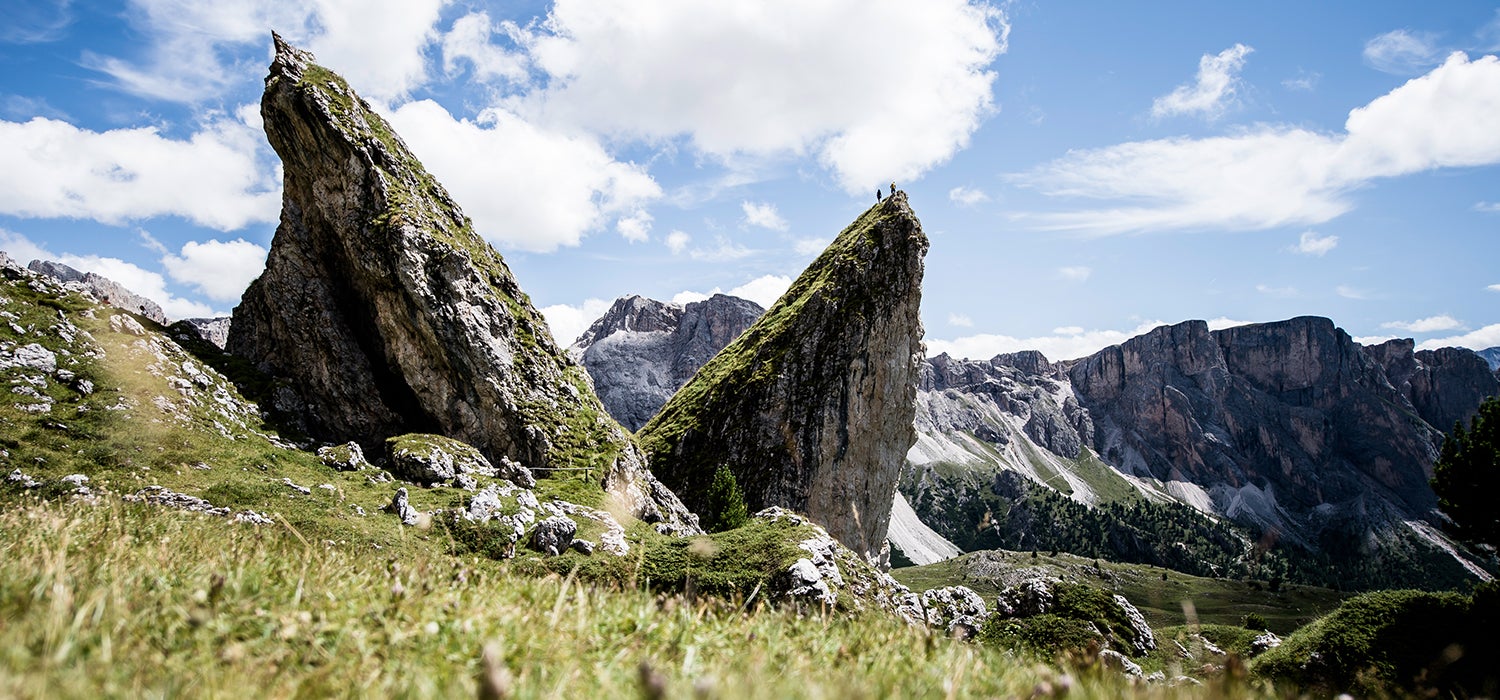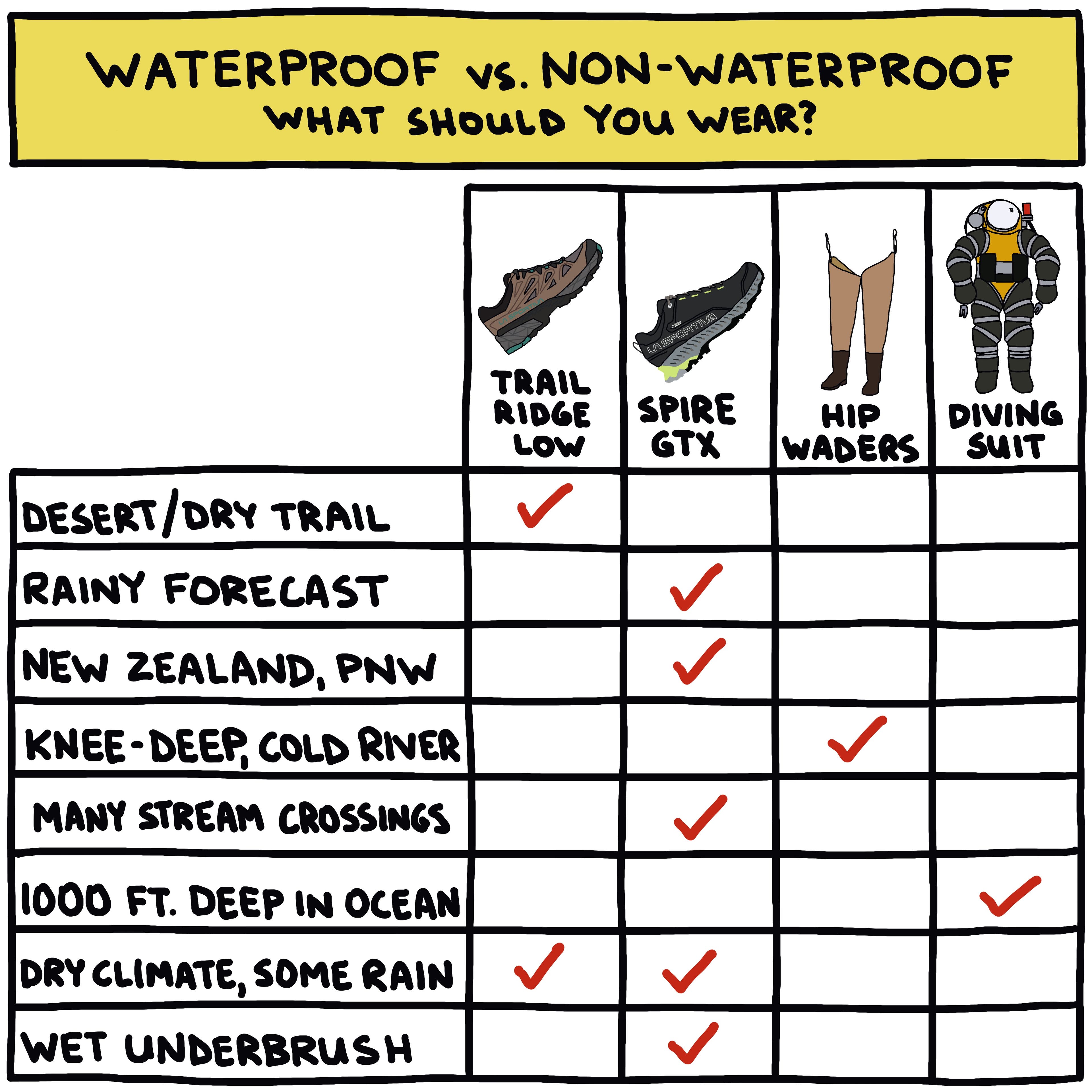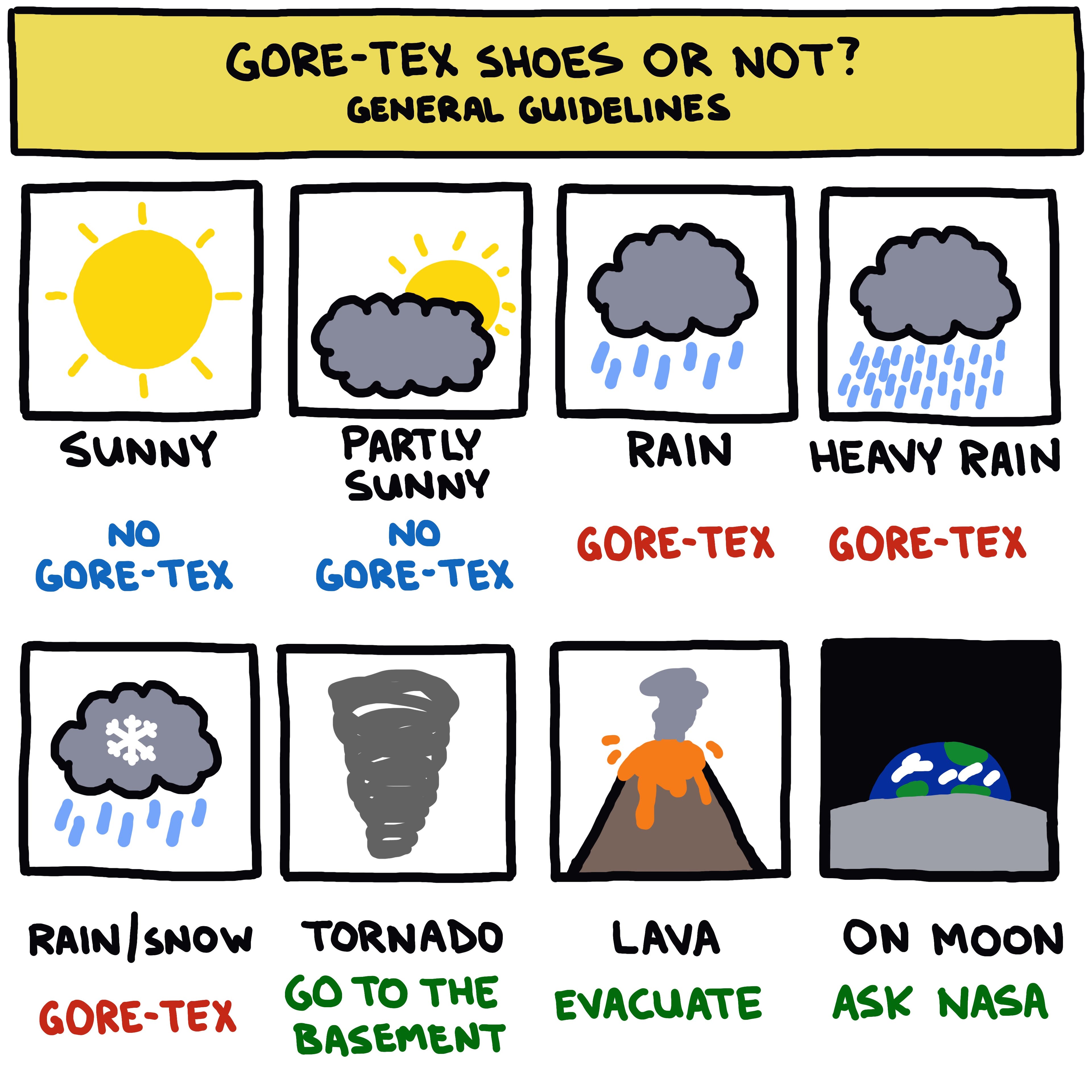When Do You Need Waterproof Hiking Shoes?

'©Claudia Ziegler/La Sportiva'
Do you want the one with the GORE-TEX or the one without the GORE-TEX? Seems like an easy question, doesn’t it? Well, it’s not that easy. At least it’s not as simple as ones like “Should I take water with you on a 10-mile hike in the desert?” (yes) or “Should I wear bacon-scented cologne while camping in grizzly bear country?” (no). The decision to wear waterproof hiking shoes is a little more nuanced.
One consideration: Where are your hiking shoes going to take you? If you’re going to the desert and don’t expect to see much water on the trail, GORE-TEX shoes are probably not necessary. If you’re going to be in the Pacific Northwest, where rainy days are more common, and even on non-rainy days, your shoes might get soaked from wet underbrush near the trail, waterproof footwear can help. If you’re hiking for several days in a row and either the climate or your schedule won’t allow for much time to dry out wet shoes? Waterproof footwear might be nice. But waterproof footwear also has limits—for example, if you step knee-deep into a creek, your foot’s going to get soaked when water pours into the top of your shoe. Here’s a chart with some examples (note that “dry climate, some rain” straddles both waterproof and non-waterproof shoes—that’s because our example shoe uses GORE-TEX®-Surround™, a more breathable form of GORE-TEX):

An Opinionated Person On The Internet would tell you one of two things: Waterproof shoes are the best, or waterproof shoes are the worst. Neither of those points are 100 percent true, nor 100 percent false—people of the Internet will also give you diametrically opposing takes on the New England Patriots, or A Star is Born, or Drake’s last song. Everyone has different needs. If you mostly hike in perpetually rainy Scotland, for example, your footwear needs are different than someone who hikes mostly in southern Utah. (But maybe you both like Drake. Or hate him.)
So you want to consider the weather forecast, or more accurately, what the weather is going to be like during most of the hikes you’ll do with your new shoes. If it’s probable that it will rain a lot where you hike, get some waterproof shoes. If it’s probable that it will rain a lot where you hike, but it’s also probable that you might just stay home instead of hiking in the rain, maybe you don’t need waterproof shoes. If you’re doing most of your hiking in sunny weather and hardly ever use that rain jacket you keep in the bottom of your pack? Maybe waterproof shoes are overkill.
Some likely and less likely weather situations:

When you’re buying hiking shoes, consider where you’re going and what the weather will be like, whether you pick waterproof, non-waterproof, buying both and carrying the other pair in your backpack at all times (not recommended), or wearing one of each on different feet (probably doesn’t make much sense either). Just definitely don’t wear bacon-scented cologne in grizzly country.